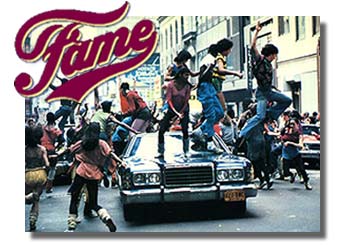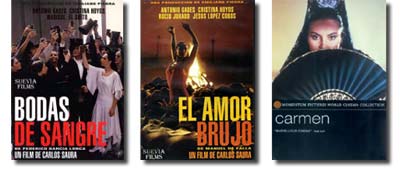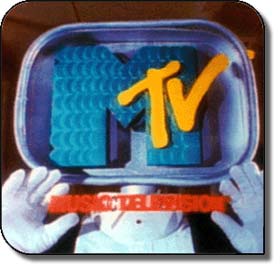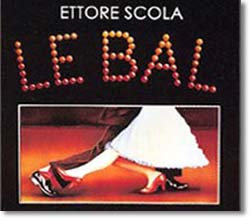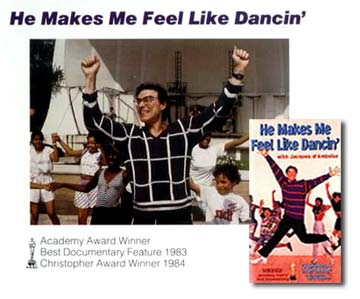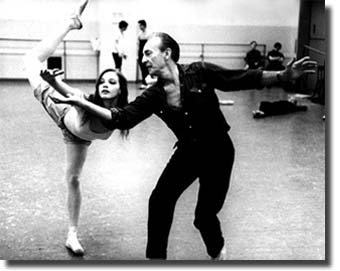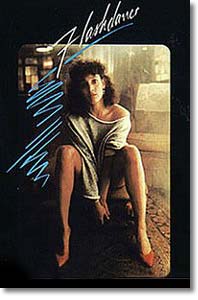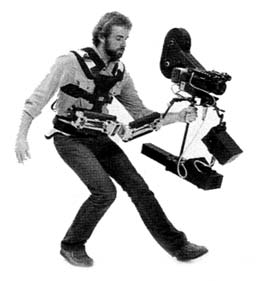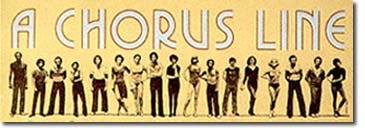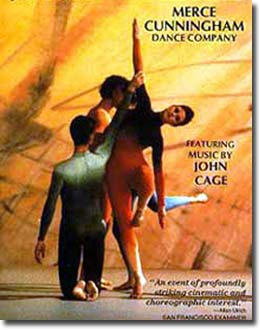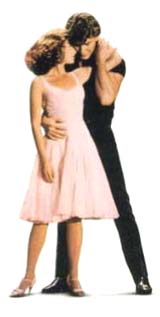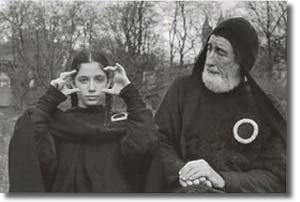|
|
1980 |
Sony introduces first consumer camcorder.
"Dance in America"'s Two Duets is unusual in that the first part, Jerome Robbins rehearsing Other Dances, followed by a performance of the piece by Baryshnikov and Makarova, (originated on film) the second part, Calcium Light Night choreographed by Peter Martins, was taped in a studio.
Alan Parker's Fame, with choreography by Louis Falco, tells the stories of the High School of Performing Arts in New York City and becomes the basis for a TV series. |
|
|
1981 |
The long-running series "Eye on Dance" hosted by Celia Ipiotis, begins in New York, first on cable and later on broadcast television.
The first collaboration between Spanish feature film director Carlos Saura and flamenco dancer Antonio Gades results in Blood Wedding, based on the Lorca play. In 1984 they produce Carmen, and finally, in 1986, El Amor Brujo.
|
|
| |
MTV begins 24/7 broadcasting of visualizations of popular music. Some of these clips include dance. |
|
ABC Arts's A Portrait of Giselle is directed by Muriel Balash and hosted by Anton Dolin. |
|
1982 |
A film without words, Le Bal, directed by Ettore Scola, weaves dancing into the history of a small Paris ballroom from 1936 to 1983.
|
|
Ellis Island, an award-winning short film directed by Meredith Monk and Bob Rosen, and choreographed and composed by Monk, is filmed on location in New York City. |
Charles Atlas directs Channels/Inserts for the Merce Cunningham Dance Company. |
| |
|
1983 |
He Makes Me Feel Like Dancin', Emile Ardolino's film about Jacques d'Amboise and hisNational Dance Institute, wins an Academy Award for best documentary feature and an Emmy in 1984.
|
|
| Merrill Brockway directs a two-part documentary on George Balanchine for WNET. |
|
| Flashdance, directed by Adrian Lyne and choreographed by Jeffrey Hornaday, stars Jennifer Beal as a Pittsburgh welder, working as an exotic dancer at night, who finally decides to audition for the Pittsburgh Ballet, with the help of film stand-in dancer Marine Jahan. |
|
| Sony introduces Beta HiFió VCR with FM-quality sound. |
|
1984 |
Backstage at the Kirov is directed by Derek Hart, who employs a camera mounted on a steadicam to allow a cameraman to follow "swans" as they enter the stage, giving viewers the dancers' view.
|
|
| Sony introduces the 8mm format. The VHS group counters with compact VHS known as VHS-C, but it only records for 20 minutes. |
|
1985 |
A Chorus Line, Richard Attenborough's film, demonstrates the problems encountered in trying to "open out" a production originally designed for the stage.
|
|
| "Alive From Off Center" a pioneering arts television series, debuts on American public television. The 12-season experimental series brings together dancers, choreographers, visual artists, film and video makers, public television, and cable and foreign broadcasters www.pbs.org/ktca/alive/alive.html. |
| |
|
| 1986 |
Elliot Caplan directs Points in Space for the Merce Cunningham Dance Company.
|
|
| |
|
| 1987 |
Dirty Dancing, directed by Emile Ardolino, stars Patrick Swayze and Jennifer Grey as unlikely dance partners at a Borscht Belt resort.
|
|
| Husk by Eiko and Koma. |
|
| |
| 1988 |
| Meredith Monk directs and choreographs the feature-length Book of Days.
|
|
| Super VHS format is introduced, equaling 8mm in picture quality but not in sound. |
| |
1989 |
| Sony introduces the Hi8 video format.
|
| |
